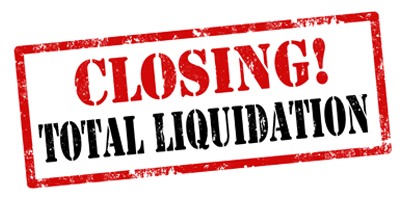The Definitive Guide to Company Liquidation
Table of ContentsAll about Company LiquidationGet This Report about Company LiquidationCompany Liquidation Can Be Fun For EveryoneSome Known Factual Statements About Company Liquidation The Best Strategy To Use For Company Liquidation
A liquidator is especially assigned to look after the ending up of a firm's events in order for it to be shut down normally when the business is going insolvent. The liquidator is an objective 3rd party who oversees the sale of company properties in order to repay any kind of arrearages.Their role consists of, yet is not limited to: Neutral Movie director: A liquidator is charged with functioning as an unbiased third party to oversee the entire firm liquidation procedure. Create Declaration of Matters: Liquidators should create a thorough declaration of affairs record. This paper is distributed to financial institutions, describing the present financial standing of business at the time of its liquidation.
After the liquidation of a company, its presence is eliminated from Companies Residence and it ceases to be a lawful entity. If directors browsed the process without problem, there would certainly be no charges or individual obligation for firm financial debts expected. Currently, with a clean slate, supervisors can explore brand-new business possibilities, though expert appointment is recommended.
The Only Guide to Company Liquidation
If even more than 90% of all firm investors concur, liquidation can take location on short notice within seven days, the minimum statutory notification for lenders. Usually, the larger the liquidation and the more possessions and funding the company has, the longer the process will certainly take.

We understand that no 2 firms coincide, which is why we will certainly put in the time to be familiar with your company so we can suggest the most effective strategy for you. We just operate in your benefits, so you can be completely confident in the service we supply.
The Main Principles Of Company Liquidation
In the visit the website UK, there is a set procedure to shutting down or restructuring a minimal business, whether it is solvent or insolvent. This procedure is called liquidation and can just be dealt with by a licensed bankruptcy practitioner (IP) according to the Insolvency Act 1986. There are 4 main kinds of firm liquidation process: Financial institutions' Voluntary Liquidation (CVL); Required liquidation; Administration; and Participants' Voluntary Liquidation (MVL).

In these conditions, it is necessary that the company discontinues trading; if the service remains to trade, the supervisors could be held directly liable and it could result in the bankruptcy practitioner reporting wrongful trading, understood as misfeasance, which may bring about lawsuit. The directors select an insolvency professional and as soon as this has been concurred and confirmed, there is a conference with the investors.
Obviously, if there are no investors, this step of the process is not required (Company Liquidation). The IP his explanation takes control of the business and begins the firm liquidation procedure. The supervisors are no more involved in what occurs, consisting of the sale of the business's properties. If the directors want any of the possessions, they can inform the IP.
A Biased View of Company Liquidation
The primary difference is that the company's financial institutions related to the court for a winding up order which forces the bankrupt firm into a liquidation process. In the majority of instances, lenders take this action as a last hotel since they haven't obtained repayment through various other types of negotiation. The court selects an insolvency expert, also understood as an official receiver, to conduct the required business liquidation procedure.
This type of firm liquidation is not voluntary and supervisors' conduct is reported to the UK's Secretary of State once the liquidation procedure has been finished. Any kind of director that stops working to coordinate with the IP or has been entailed in supervisor misbehavior, or an illegal act, may result in severe effects.
It is utilized as a method to shield the firm from any legal action by its creditors. The directors of the business agree to make routine repayments to resolve their financial debts over a duration of time.
Some Known Details About Company Liquidation
This gives the company with time to develop a plan going forward to save the firm and prevent liquidation. At this point, supervisors hand control of the firm over to the selected administrator. If a firm is solvent yet the directors and shareholders wish to close the company, a Members Volunteer Liquidation is the right choice.
The company Source liquidation procedure is handled by a liquidator designated by the directors and investors of the company and they must authorize a declaration that there are no financial institutions continuing to be. The liquidation process for an MVL is comparable to that of a CVL in that assets are become aware however the profits are dispersed to the directors and the investors of the company after the liquidator's charges have actually been paid.